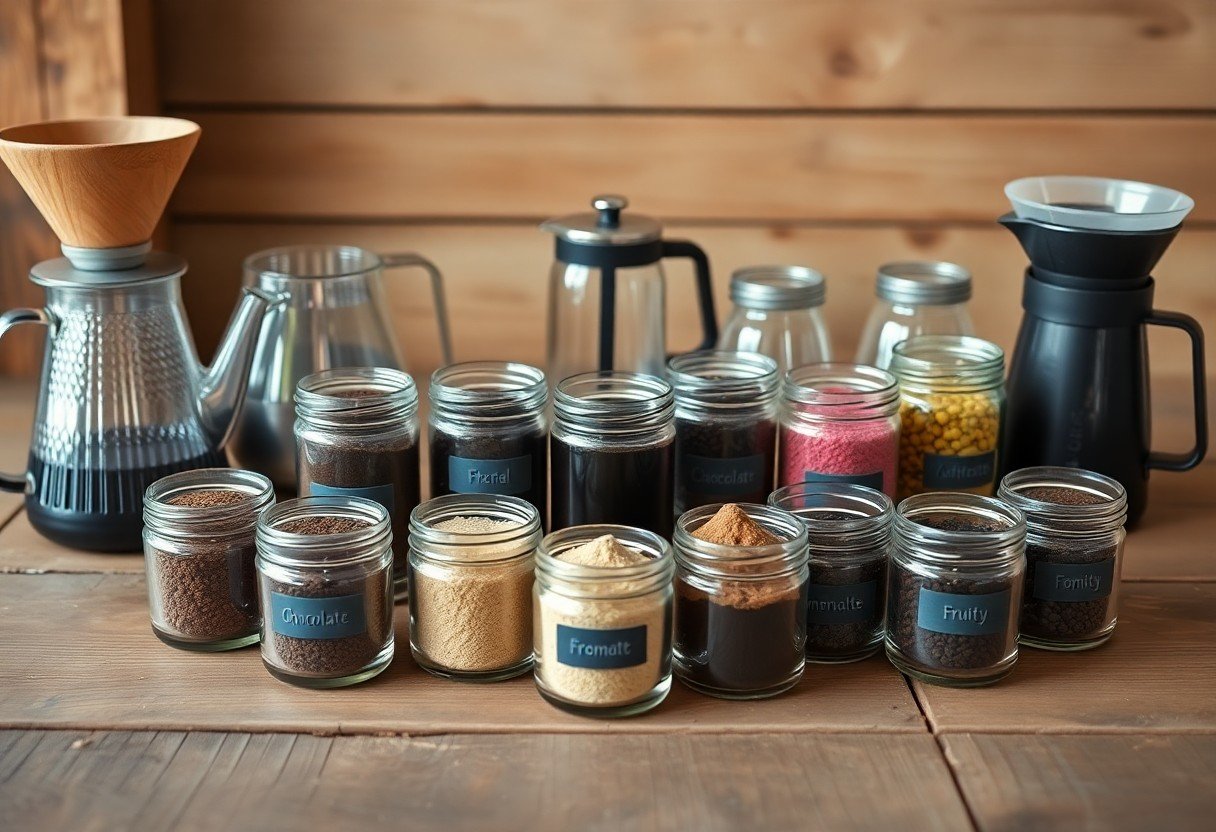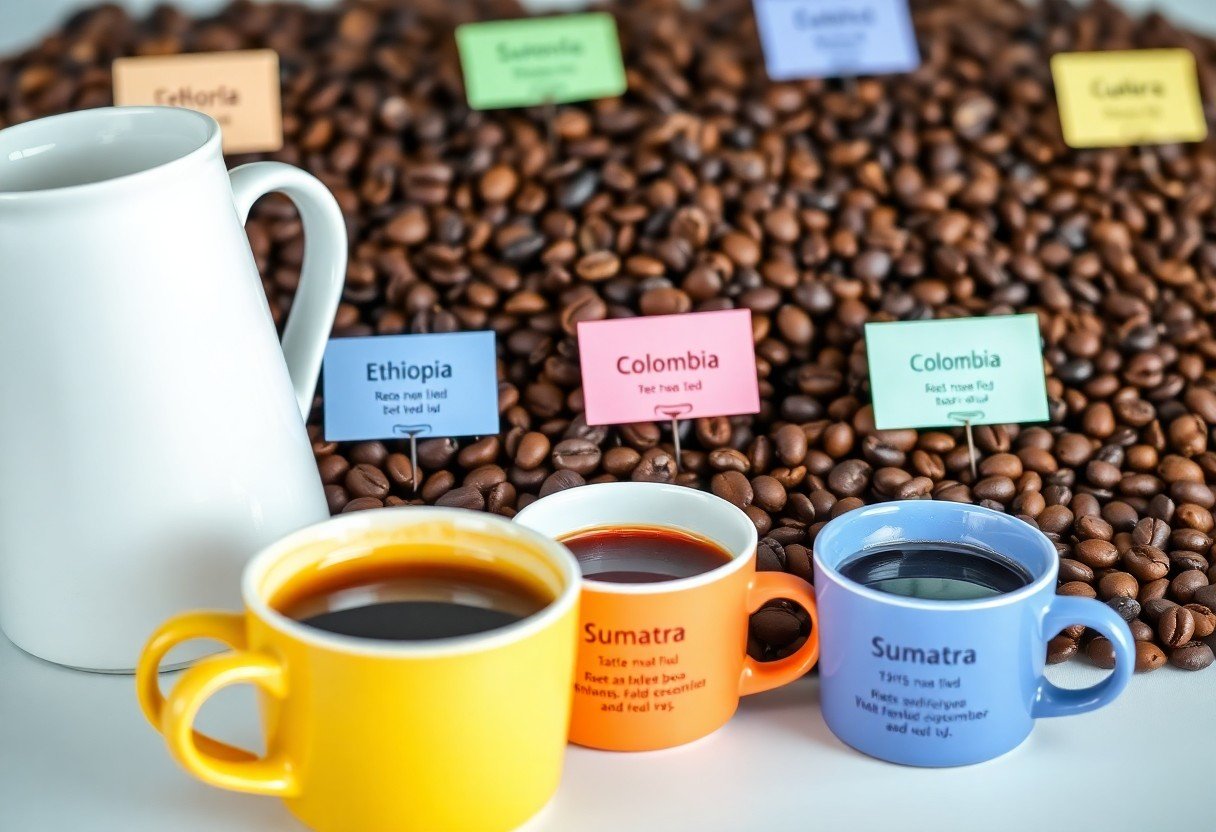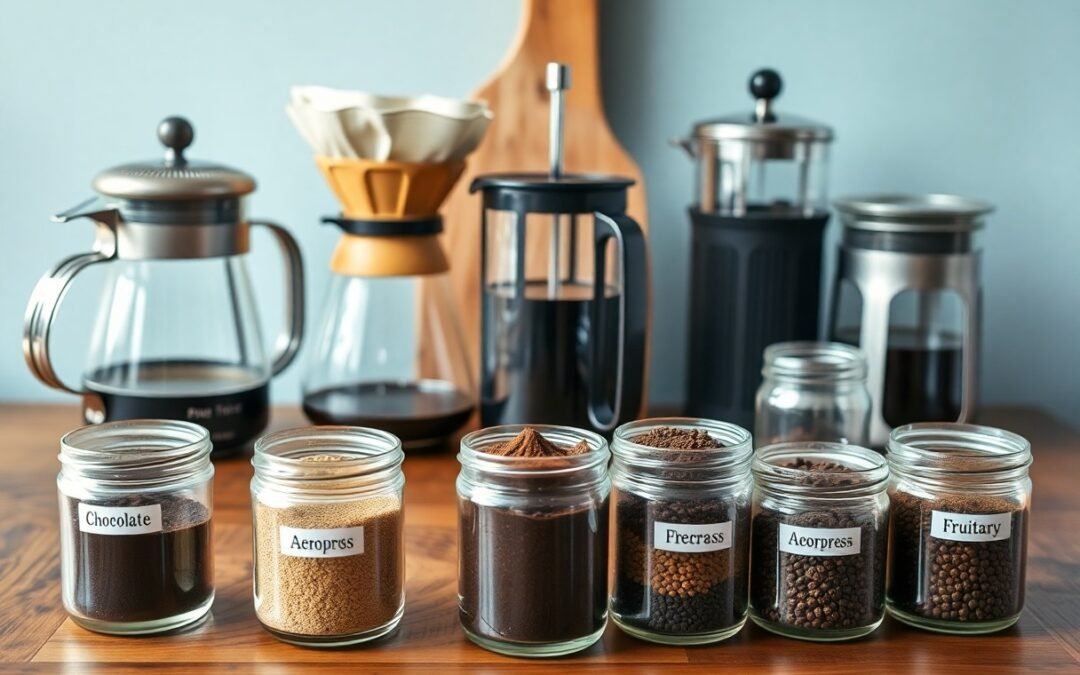Most coffee enthusiasts often find themselves bewildered by the myriad of flavors in artisan coffee. This guide will help you navigate the complex world of coffee tasting, enabling you to identify and appreciate distinct flavor profiles. You will learn how factors like origin, processing methods, and roasting influence the taste in your cup. By the end, you’ll feel more confident in selecting and savoring artisan coffee that truly reflects your preferences.

The Art of Flavor Extraction
Flavor extraction is a delicate balance of time, temperature, and technique, directly impacting the aroma and taste of your coffee. Achieving optimal extraction involves understanding how different elements interact during the brewing process. Each variable can bring out different flavors, enhancing the complexity of your cup and allowing you to appreciate the full spectrum of the coffee’s potential.
The Chemistry of Coffee
The chemistry of coffee centers around the compounds released during brewing, including acids, sugars, oils, and aromatics. These components contribute to the coffee’s acidity, body, and flavor notes. For instance, the Maillard reaction occurs during roasting, forming hundreds of flavor compounds that evolve as coffee brews, making each cup a unique experience.
Brewing Techniques that Influence Taste
Various brewing methods can significantly alter the final flavor profile of your coffee. Techniques like pour-over, French press, and espresso have distinct extraction times and pressure levels that shape the nuances in taste. For example, a pour-over typically highlights bright acidity and delicate flavors while French press may yield a fuller body due to the longer steeping time.
In pour-over brewing, the water passes through coffee grounds slowly, enhancing clarity and highlighting acidity. Conversely, in a French press, coffee steeps for about four minutes, extracting more oils and creating a rich, bold flavor. Espresso demands a high-pressure extraction in under 30 seconds, emphasizing sweetness and depth. By experimenting with these different techniques, you can discover how each method influences the overall flavor and character of your coffee, allowing you to tailor your brew to your personal preferences.
Demystifying Coffee Tasting Notes
Understanding coffee tasting notes can elevate your appreciation of each cup. Tasting notes are descriptions of the flavors and aromas you experience while sipping. These notes often reflect the origin, processing method, and roast level, guiding you toward recognizing distinct characteristics like fruitiness, nuttiness, or floral hints. With practice, identifying these flavors becomes intuitive, enhancing your overall coffee experience.
Breaking Down the Flavor Wheel
The flavor wheel is an imperative tool in coffee tasting, categorizing flavors into sectors such as fruity, floral, and spicy. Each sector contains specific flavor descriptors that help you articulate the complexities you perceive in your coffee. By familiarizing yourself with the wheel, you can enhance both your understanding and enjoyment of different brews, allowing you to pinpoint nuances in every cup.
Factors That Shape Flavor Profiles
Your coffee’s flavor profile is influenced by several factors, including the bean variety, growing conditions, processing methods, and brewing techniques. The altitude at which coffee is grown affects its acidity and sweetness, while wet or dry processing alters its flavor dynamics. Additionally, how you brew—whether using a pour-over or espresso machine—can reveal or mask specific tastes.
- Bean variety: Arabica vs. Robusta
- Elevation and soil conditions
- Processing methods: washed vs. natural
- Brewing technique: immersion vs. percolation
- Roast level: light, medium, dark
Perceiving these factors in your cup leads to a richer tasting experience. Each element contributes a unique layer, making the study of coffee truly comprehensive.
- Influence of climate and weather variations
- Timing of harvest and its impact on freshness
- Water quality and its effects on extraction
- Grinding consistency and its role
- Personal palate and sensory experiences
Perceiving how these elements interact will sharpen your tasting skills, allowing you to discern and enjoy the subtleties of artisan coffee.

Origin Stories: Geography’s Impact on Flavor
Your coffee’s flavor is not just a result of its variety but is deeply influenced by its origin. Factors such as altitude, climate, and soil composition shape the beans’ unique taste profiles. Different regions produce coffees with distinct characteristics, allowing you to experience a world of flavors in every cup.
The Influence of Terroir
Terroir encompasses the environmental conditions in which coffee is grown, including soil type, climate, and altitude. These elements combine to enhance specific flavor notes within the beans. For instance, high-altitude farms often yield coffee with brighter acidity and more pronounced flavor clarity, while lower elevations may produce fuller-bodied, earthier profiles.
Notable Coffee Regions and Their Signature Tastes
Coffee from Ethiopia tends to feature vibrant fruit notes and floral aromas, while Colombian coffee is known for its smooth, balanced flavor with hints of caramel and nuts. Brazil, on the other hand, typically yields chocolatey, nutty profiles with low acidity. Exploring these regions helps you understand how geography contributes to the coffee experience.
In Ethiopia, you might encounter natural processed coffees that amplify fruity and berry-like notes, making each sip a lively experience. Colombian regions, particularly from Huila and Antioquia, deliver exceptional balance, often incorporating flavors reminiscent of cocoa and sweet citrus. In Brazil, the predominance of the natural processing method enhances sweetness and chocolate undertones, creating a comforting cup. Each area gives you a glimpse into the diverse world of coffee, inviting you to explore further.
Profiling Coffee Beans: A Varietal Journey
The Role of Coffee Varietals
Coffee varietals significantly shape your tasting experience by introducing distinct flavor notes and aromas. Variants such as Arabica and Robusta differ not only in taste but also in how they respond to climate, soil, and cultivation practices. Each varietal can carry unique characteristics, providing a rich tapestry of flavors, from fruity and floral to earthy and nutty. Understanding these differences allows you to select coffees that align more closely with your personal taste preferences.
Common Varietals and Their Unique Profiles
Arabica and Robusta are the most common coffee varietals, each boasting unique flavor profiles. Arabica typically offers a smoother, more nuanced taste with bright acidity and sweet undertones, while Robusta is known for its strong, bold flavor and higher caffeine content, often presenting a bitter edge. Other notable varietals include Bourbon, recognized for its rich and complex flavors, and Geisha, famed for its delicate floral notes and tea-like qualities.
Bourbon varietals often shine with a sweet, rounded flavor profile that can include notes of caramel and chocolate, making them sought after in the specialty coffee market. Geisha, originally from Ethiopia and popularized by Panamanian farms, is distinctive for its jasmine-like aroma and vibrant acidity. Each varietal’s complexity often invites exploration; tasting coffees side by side reveals the subtleties in flavor and aroma, enriching your journey through artisan coffee. Embracing this diversity allows you to appreciate the craftsmanship behind each cup more deeply.
Cultivating Your Palate: Practical Tasting Techniques
Developing a refined palate for coffee requires intention and practice. Tasting coffee is a sensory experience that transcends basic flavors. You can train your senses by familiarizing yourself with different aromas, tastes, and textures. Start by focusing on specific flavor notes as you taste, paying attention to how they develop on your palate. This systematic approach enhances your ability to discern various profiles, making your coffee experience more enjoyable and insightful.
Steps to Effective Coffee Tasting
Effective coffee tasting begins with preparing the right environment. Use freshly ground coffee, ideally within minutes of brewing, to preserve its full flavor potential. Start by smelling the grounds to identify distinct aromas. Take a small sip, allowing the coffee to coat your tongue and linger before identifying flavors. Consider the acidity, body, and aftertaste, taking notes on each element to enhance your understanding.
Creating a Flavor Journal
A flavor journal serves as an invaluable tool in tracking and enhancing your coffee tasting journey. Jot down your impressions, including specific notes about aroma, flavor, acidity, body, and aftertaste. This practice helps you solidify your understanding of various coffees and assists in recognizing patterns in flavors you enjoy. Eventually, you’ll refine your preferences and be better equipped to select coffees that align with your tastes.
In your flavor journal, consider using a consistent format for each entry. Record the coffee type, origin, brewing method, and your tasting notes. Use a scale or descriptors to indicate intensity for different flavor characteristics. Over time, this collection of observations not only helps track your evolution as a taster but also reveals underlying preferences, guiding future coffee choices. For example, noting a consistent appreciation for floral aromas can lead you to explore coffees from specific regions or varietals that showcase those notes prominently.
To Wrap Up
From above, you have explored the various aspects of artisan coffee flavor profiles, gaining insight into how factors like origin, processing methods, and brewing techniques influence taste. By understanding these elements, you position yourself to make informed choices, whether you’re selecting beans or brewing your next cup. Embrace the complexity and diversity of flavors, allowing your palate to discover new favorites as you continue your journey into the world of artisan coffee.
FAQ
Q: What are flavor profiles in artisan coffee?
A: Flavor profiles in artisan coffee refer to the specific tastes and aromas present in the coffee, which can include fruity, nutty, floral, or spicy notes. These profiles are influenced by factors such as the coffee bean origin, processing method, and roasting technique.
Q: How can I identify different flavor profiles in coffee?
A: To identify different flavor profiles in coffee, engage your senses by tasting various single-origin coffees, using a cupping method. Pay attention to the initial taste, aftertaste, acidity, and aroma, along with any distinct flavors that emerge during the tasting process.
Q: What factors affect the flavor profile of artisan coffee?
A: Several factors affect the flavor profile of artisan coffee, including the bean variety, growing conditions, processing methods (washed, natural), roast level, and brewing technique. Each element contributes to the final taste experience.
Q: How can I enhance my coffee tasting experience?
A: To enhance your coffee tasting experience, use clean, filtered water, select fresh beans, and experiment with different brewing methods. Additionally, try to taste coffee at varying temperatures to uncover more complex flavor notes.
Q: What is the importance of coffee roast profile in flavor?
A: The roast profile significantly impacts the final flavor of coffee. Lighter roasts tend to highlight the bean’s natural flavors, while darker roasts can introduce more roasted, bitter notes. Understanding roast levels can help you select coffees that align with your flavor preferences.

